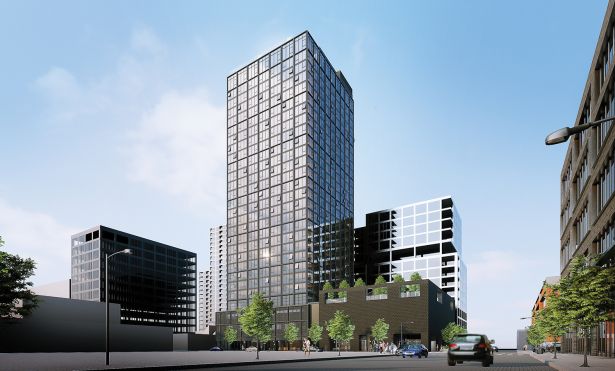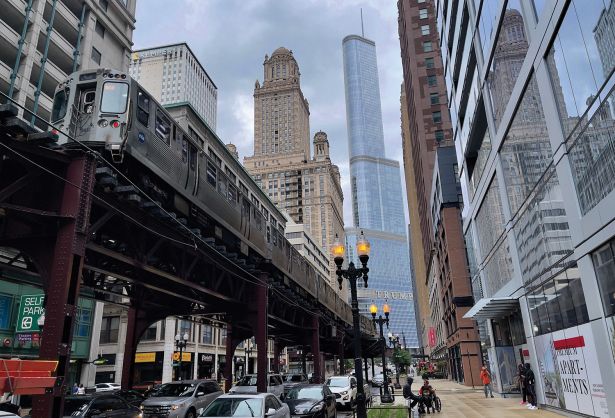Chicago Multifamily Has Become Popular by Threading the Supply and Demand Needle
Chicago’s multifamily market — where the need is steady and the inventory static — draws investors bearish on oversupplied Sun Belt cities
By Patrick Sisson September 18, 2024 6:00 am
reprints
The Second City has sprinted ahead when it comes to attracting investor interest in multifamily investments.
In an intriguing turn in the market, Chicago has become somewhat of a dark horse investor’s darling. It’s long been characterized as a slow and steady market, without the well of development found in the Northeast or in the fast-growing population centers of the Southeast or Southwest. There’s a reason Equity Residential, the multifamily behemoth based in the city that the late tycoon Sam Zell founded, doesn’t invest in its hometown.
“Equity was always hard to get in Chicago,” said Tyler Hague, executive vice president of Midwest multifamily advisory for Colliers. “Most institutions would just tell you ‘No’ before you finish the word ‘Chicago.’ And, so, because of that, nothing’s been built.”
Today, the Midwest metropolis finds itself with a low multifamily vacancy rate of 5.6 percent, a shrinking development pipeline, and a forecast for rising rents. In short, it’s a good buy, and investors have taken notice.
“I think it’s an extraordinarily attractive market today, the fundamentals are fantastic,” said Thomas Shanabruch, vice president of investments and capital markets for CRG, the real estate and investment arm of Clayco. “One of the nice things about Chicago is that it’s always slow and steady. You’ve seen that in rent growth numbers, you’ve seen that in continued absorption in the market, and, looking to the future, if you’re an owner, there’s reasons to be extraordinarily optimistic.”
Chicago’s rise comes during a period of real softness for the national rental market, said Chris Salviati, a housing economist for listing and research site Apartment List. The ramp-up in multifamily construction in recent years means in 2024 the nation will see the most new units delivered since the ’80s, with predictable impacts on the market. Rents remain down about 1 percent year-over-year, but have sunk much further and faster in many of the Sun Belt cities celebrated as sure bets in the recent past. Austin in particular has seen a big dip due to oversupply, with rents down 6 percent.
In Chicago, however, rents rose 2.5 percent last year, a typically modest sum that stands out in a sinking market. Again, slow and steady has perhaps won the race. Chicago saw an uptick in permits and buildings like other markets, but not nearly the same significant ramp-up found in cities like Charlotte, N.C. Of the 54 U.S. cities with 1 million or more people, Salviati says Chicago was 14th for rent growth last year. A recent J.P. Morgan analysis highlighted the market’s “steady, stable performance,” and underscored the value of workforce housing.
And anybody holding Chicago apartments will likely see that rent growth accelerate as the pipeline’s flow slows to a trickle. Shanabruch said that Chicago has, like clockwork, seen roughly 4,000 new units a year for the last decade in downtown submarkets. Next year, there’s just 308 units coming on the market, all at the 220 North Ada Street project, a joint project with Shapack, CRG and KMW Communities Development. And, in 2026, all that Shanabruch sees on the horizon are 600 or so units at Related Companies’ former Spire site near the city’s lakefront.
“From an affordability standpoint, that might produce some challenges for the city. But, if you’re an owner, you’re looking at that and saying, ‘It’s going to be amazing,’ ” he said.

The demand side has also helped Chicago’s rental market make gains on other metros. The stratospheric, double-digit rent increases of recent years really impacted the popular Sun Belt market that used to be more attractive due to its affordability versus places such as San Francisco, Boston and New York. Now, Salviati said, the price delta between, say, San Francisco and Phoenix isn’t as attractive anymore. And Chicago remains, like much of the Midwest, perhaps “the last bastion of housing affordability.”
The city, too, has a much better economic growth story to tell, which much of the national media sidesteps, preferring instead to report on some of the real crime issues plaguing disinvested areas, especially on the city’s south and west sides. The city has had a boom in corporate relocations, and as Shanabruch says, it’s still a magnet for “brain capital” from across the Midwest, from Big Ten schools and local universities like Northwestern and the University of Chicago. All produce graduates, and potential tenants, with a fair chance of spending the first decade of their career in Chicago.
On a submarket level, Chicago’s near west and south sides still command attention. The buildup around Fulton Market and the West Loop continues, as an area historically known for produce markets and meatpacking has become a home to hot restaurants, start-up spaces, high-rises and even a Soho House. And the South Loop has continued its multi-decade vertical expansion, with new apartments spreading down from the Loop.
Both areas also have megaprojects in various stages of development that would further spur multifamily interest. Southwest of the Loop, Related is developing The 78, a $7 billion mixed-use project on former railroad property. On the near west side, the owners of the United Center, home of the NBA’s Bulls and the NHL’s Blackhawks, have proposed their own $7 billion 1901 Project in and around the stadium’s parking lots.
There’s expanding interest into other neighborhoods, too, said Hague, with some clients moving more northwest into Wicker Park and Logan Square — which have seen a spate of new projects along the L system’s Blue Line in recent years — as well as into Jackson Park, Hyde Park and Garfield Park. Elsewhere, zoning restrictions and conversions — knocking down three flats to build relatively massive single-family homes — has helped to artificially restrict apartment supply, again adding more pressure to increase rent.
“You can buy a brand-new apartment building for effectively what it costs to build, or in some situations below that replacement cost,” Hague said. “The thought process is, ‘Why would I build something if I could just buy it for less?’ ”

There’s even growth in select suburban markets, especially transit-oriented developments near stops for the regional Metra rail line. Naperville, in suburban DuPage County, saw 5 percent rent growth over the past year.
Colliers’ Hague still sees some institutional wariness over Chicago, but, to him, that just means more localized and regional investors who understand the area’s dynamics will win out. “It’s probably the best market conditions in the last five years,” he said. “And we’re starting to see the capital come back, albeit very slowly.”
There remain some hurdles for more accelerated investment, said CRG’s Shanabruch, notably uncertainty around real estate taxes, which complicates underwriting, can keep valuations down, and have kept institutions a bit on the sidelines. There’s also 35 million square feet of vacant office space in Chicago weighing on the larger commercial real estate market. But Shanabruch sees apartment rents rising between 3 and 5 percent for the next few years, a perfect pace for a more muted market.
“Chicago’s not a boomtown, it’s never going to be, which is good,” he said. (Indeed, while the city’s population has declined in recent years, it is currently about where it was in 2010.) “I think there are going to be investors who slowly get into the market now who are going to make a lot of money.”


